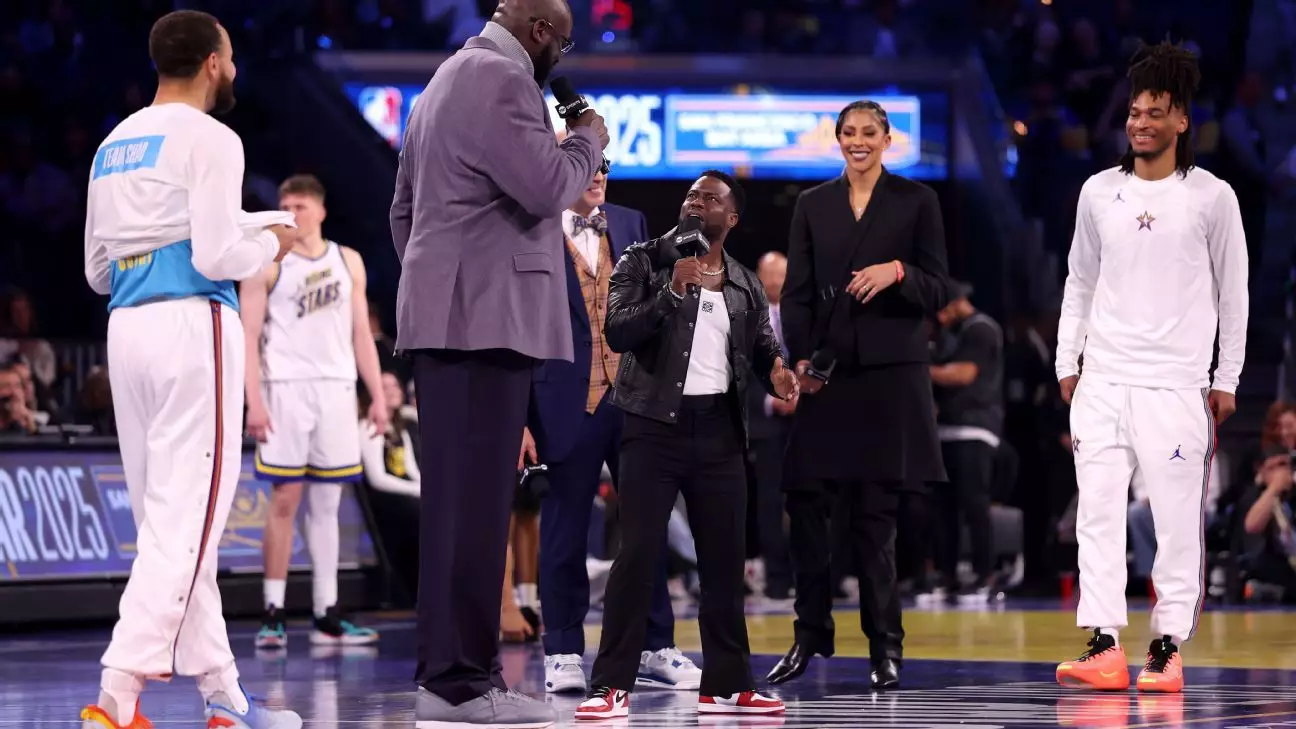The NBA All-Star Game has long been a beloved showcase of elite basketball talent, but this year’s shift to a dynamic tournament format sparked a whirlwind of opinions from players and fans alike. As the league continues to evolve, revelries over tradition and innovation inevitably come into play. This article dissects the changes made this year and evaluates the reception and implications for future All-Star weekends.
In an attempt to rejuvenate the All-Star experience, the NBA opted to abandon the classic East vs. West rivalry, embracing a forward-thinking four-team tournament structure. Each team, drafted by noted TNT analysts like Charles Barkley and Shaquille O’Neal, aimed for a target score of 40 points per round. Notably, the tournament featured a fresh composition by including the previous winner of the Rising Stars event. While the ambition behind the format was admirable, it presented significant challenges, most markedly the game’s flow.
Players uniformly recognized the heightened excitement of competing in what was perceived as a more competitive atmosphere. Despite this, many voiced their dissatisfaction with the numerous in-game breaks—interruptions that disrupted play and diminished overall enjoyment. Trae Young was particularly vocal, expressing that the extended timings engineered for entertainment purposes clashed with the essence of competitive play. “The games were too short, and the breaks just took away from the action,” he lamented, highlighting what many athletes believed were unnecessary pauses.
Perhaps the greatest tension of the evening lay in reconciling the need for live entertainment—embodied by the presence of comedian Kevin Hart—with the athletes‘ desire for an uninterrupted contest. While conceptually, Hart’s commentary aimed to engage the crowd, the impact on game fluidity was undeniable. Players such as Shai Gilgeous-Alexander noted that, while they enjoyed the competition, the excessive halts were counterproductive to fostering a legitimate battle on the court. Jaylen Brown echoed these sentiments, suggesting that halting the game was detrimental, particularly for a spectacle labeled as „All-Star,“ which should revolve around athletic prowess.
Draymond Green’s criticism of including Rising Stars further exposed the conflict between maintaining a high stakes environment and inviting less seasoned players to participate. His reflections on how the game’s purpose shifted underscore a broader debate over athletic integrity versus entertainment value.
In addition to format critiques, the absence of certain marquee players left a palpable void in the event’s allure. Stars like LeBron James and Giannis Antetokounmpo, sidelined due to injuries, shifted the profile of the competition and arguably diminished the overall spectacle. The playing field, while teeming with talent, lacked the superstar glow that fans have come to expect. Such absences not only affected the competition’s intensity but also the level of excitement typically associated with the All-Star Game.
The champion of the night, Shaq’s OGs—boasting players like Stephen Curry and Kevin Durant—exemplified the evolving dynamics in squad composition. The presence of seasoned players ultimately contributed significantly to their victory, with Curry claiming MVP honors. Yet, did their triumph illustrate the format’s underlying flaw, where familiarity among established players may overshadow emerging talent?
The inaugural tournament format no doubt succeeded in sparking dialogue on how to enhance the All-Star experience, but it also highlighted areas needing refinement. Conversations around optimizing game flow, restructuring breaks, and potentially re-evaluating participant selection will likely influence future All-Star formulations.
As Curry pointed out, seeking fresh ideas to inject „new life“ into the event is essential, yet how that innovation manifests remains critical. The league should balance entertainment and performance while ensuring star power is harnessed, allowing the All-Star Game to reclaim its luster. Judging by player feedback, there appears to be a collective desire to evolve further—one that honors the game’s history while redefining its future.
In an ocean of change within sports entertainment, the 2023 NBA All-Star Game stands as a case study in navigating player sentiments, entertainment value, and the pursuit of maintaining basketball’s competitive spirit. Each All-Star Weekend is a unique opportunity to celebrate excellence; let us hope the dialogue spurred by this year’s tournament serves as a catalyst for meaningful change in the seasons to come.


Napsat komentář